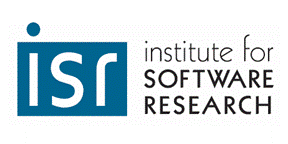
Institute for Software Research
School of Computer Science, Carnegie Mellon University
Detecting Changes in a Dynamic Social Network
Ian McCulloh
April 2009
Ph.D. Thesis
Computation, Organizations and Society
Social network analysis (SNA) has become an important analytic tool for
analyzing terrorist networks, friendly command and control structures, arms
trade, biological warfare, the spread of diseases, among other applications.
Detecting dynamic changes over time from an SNA perspective, may signal an
underlying change within an organization, and may even predict significant
events or behaviors. The challenges in detecting network change includes the
lack of underlying statistical distributions to quantify significant change,
as well as high relational dependence affecting assumptions of independence
and normality. Additional challenges involve determining an algorithm
that maximizes the probability of detecting change, given a risk level for
false alarm.
A suite of computational and statistical approaches for detecting change are identified and compared. The Neyman-Pearson most powerful test of simple hypotheses is extended as a cumulative sum statistical process control chart to detect network change over time. Anomaly detection approaches using exponentially weighted moving average or scan statistics investigate performance under conditions of potential time-series dependence. Fourier analysis and wavelets are applied to a spectral analysis of social networks over time. Parameter values are varied for all approaches. The results are put in a computational decision support framework.
This new approach is demonstrated in multi-agent simulation as well as on eight different real-world data sets. The results indicate that this approach is able to detect change even with high levels of uncertainty inherent in the data. The ability to systematically, statistically, effectively and efficiently detect these changes has the potential to enable the anticipation of change, provide early warning of change, and enable faster appropriate response to change.
176 pages
Return to:
SCS Technical Report Collection This page maintained by reports@cs.cmu.edu
School of Computer Science homepage